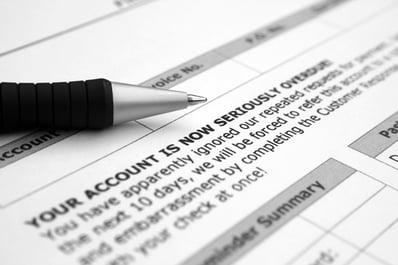 Your accounts receivable department is one of your most important assets and you should not take it for granted. Unlike cash, an accounts receivable account does not hold any guaranteed benefits for your company – at least until after it is paid in full. That being said, you can streamline the efficiency of your accounts receivable with the right process. Here is how to better manage your accounts receivable process:
Your accounts receivable department is one of your most important assets and you should not take it for granted. Unlike cash, an accounts receivable account does not hold any guaranteed benefits for your company – at least until after it is paid in full. That being said, you can streamline the efficiency of your accounts receivable with the right process. Here is how to better manage your accounts receivable process:
Be aware of all of the accounts receivable pitfalls beforehand
Knowing how to do everything right begins with knowing how to avoid everything that you could do wrong. Here are four common accounts receivable process pitfalls that you must actively avoid:
Not maintaining strong client relationships
Having a strong client relationship with a debtor both increases the likelihood that someone will be willing to pay (even if they are strapped for cash) and gives you additional opportunities to build up leverage to get them to pay.
Not having strict accounts receivable policies
Being too lax with your accounts receivable policies can make it difficult for you to have a consistent collection process. This will also make handling past-due accounts a bigger mess than it needs to be.
Not paying full attention to all relevant communications
Keeping up with all relevant communications will allow you to have a better understanding of how to handle each accounts receivable case. At the very least, make sure to track communication dates, times and specific details about the conversation.
Not getting on top of delinquencies as soon as they pop up
Delinquent accounts should be handled immediately. All factors should be considered, including whether or not the account in question is owned by a repeat offender.
Make use of all available technologies
Modern technology can make every element of your business run more smoothly, including your accounts receivable process. As such, making use of the latest, greatest technologies is a must for more effectively managing your accounts receivable department. Fortunately, the technology needed in this case is easy to acquire.
Make sure that all of your accounts receivable data is digital
Attempting to manage your accounts receivable via paper documents can significantly muddle the process. When everything is already digital, you can easily access and manage all of your accounts receivable data. This applies even if your accounts receivable data is all in paper right now. You can convert it all through the help of a professional document conversion company. If, for any reason, any of your future accounts receivable data is in paper form, you should invest in your own scanner.
Use the right accounts receivable management software
With all of your accounts receivable data, you can start using accounts receivable management software to streamline the use of it. At the very least, you should be using the following two types of software:
Accounting software
A good set of accounting software like QuickBooks will allow you to break down and distribute the data within your accounts receivable department.
Document management software
In order for your accounting software to be effective, you need to be able to easily access specific accounts receivable data whenever you need to. Document management software like FileBound and FileDirector will allow you to manage and access all of your accounts receivable data with no problem at all.
Don't allow your accounts receivable to get away from you
Your accounts receivable process is critical for making sure that your debtors pay your company on time and that you are effectively keeping track of monies owed. Make sure that you are taking every necessary step to streamline your process.

